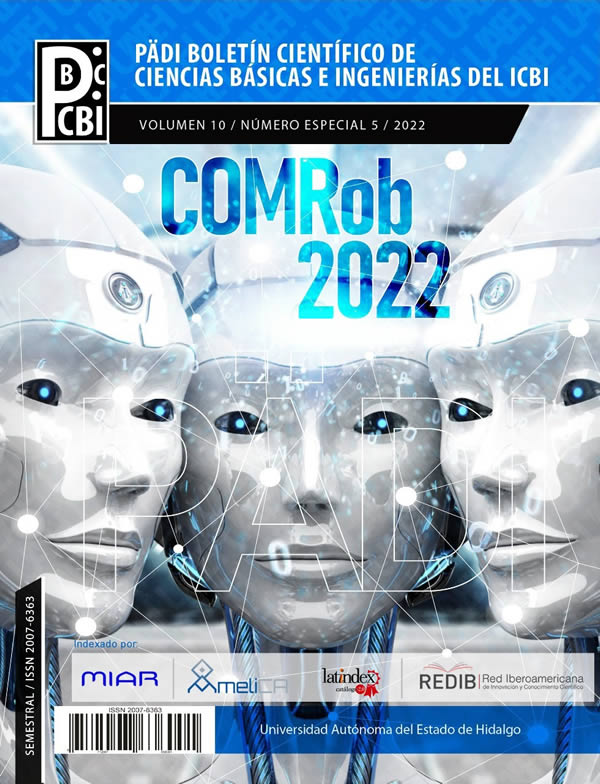Comparative study of WaveNet-IIR PID controllers applied to a 2 GDL helicopter
Abstract
In intelligent control applications, one problem is determining the number of layers and neurons in each layer. The problem becomes even more complex when the neural network includes functions like WaveNets, where translations and dilations are additional parameters. This article presents a comparative study to determine the type of wavelet and number of neurons that best perform to approximate the Quanser helicopter dynamics with two degrees of freedom (DOF). The identification is based on a radial-based neural network whose activation functions are wavelets together, a pair of infinite impulse response (IIR) filters to ``prune'' some neurons. Additionally, a PID-WaveNet-IIR is presented, composed of a set of discrete PID controllers with self-tuning gains. Through numerical simulations using LabVIEW, the performance of the closed-loop system is presented under different operating conditions, types of family wavelets, where the minimum values of tracking errors are given previously, the number of neurons in the network, and the number of IIR filter lead and lag coefficients.
Downloads
References
Abuhamdia, T. y Taheri, S. (2017). Wavelets as a tool for systems analysis and control. Journal of Vibration and Control, 23:1377 – 1416.
Åström, K. (1995). PID Controllers. Instrument Society of America.
Åström, K. (1996). Advanced PID control. Instrument Society of America.
Barron-Gómez, R., Ramos-Velasco, L. E., Espinoza-Quesada, E., y GarcíaCarrillo, L. (2017). Wavelet neural network pid controller for a uas transporting a cable-suspended load. 20th World Congress, IFAC, pp. 2371–2376.
Carrillo-Santos, C., Seck-Tuoh-Mora, J., Hernandez-Romero, N., y Ramos-Velasco, L. (2018). Wavenet identification of dynamical systems by a modified PSO algorithm. Eng Appl Artif Intell, 79:1–9.
Deisenroth, M., Faisal, A., y Ong, C. (2020). Mathematics for machine learning. Cambrige University Press.
Domínguez-Mayorga, C. R., Espejel-Rivera, M., Ramos-Velasco, L. E.,
Ramos-Fernandez, J., y Escamilla Hernádez, E. (2012). Wavenet algorithms with applications in approximation signals: a comparative study. RIAI, 9:347–358.
Garcia-Castro, O. F. (2020). Controladores PID wavenet aplicados a un modelo de helicoptero de 2 GDL. Ge, S. S. y Wang, C. (2002). Direct adaptive nn control of a class of nonlinear systems. IEEE Trans Neural Netw, 13(1):214–221.
Haykin, S. (1999). Neural networks: a comprehensive foundation. Pearson Eduaction Inc, EUA.
Huang, S., Tan, K. K., y Lee, T. H. (2002). Adaptive motion control using neural network approximations. Automatica, 38(2):227–233.
Huang, S., Tan, K. K., y Putra, A. S. (2007). Adaptive control of mechanical systems using neural networks. IEEE Trans Syst Man, 37(5):897–903.
Inc., Q. (2012). User manual 2 DOF helicopter experiment, set up and configuration. Markham, Ontario.
Li, Y., Qiang, S., Zhuang, X., y Kaynak, O. (2004). Robust and adaptive backstepping control for nonlinear systems using RBF neural networks. IEEE Trans Neural Netw, 14(3):693–701.
Mallat, S. (2009). A wavelet tour of signal processing. Elsevier.
Ogata, K. (1996). Sistemas de control en tiempo discreto. Prentice Hall.
Ramos-Velasco, L. E., Domínguez-Ramírez, O., y Parra-Vega, V. (2016). Wavenet fuzzy PID controller for nonlinear mimo systems: experimental validation on a high-end haptic robotic interface. Applied Soft Computing, pp.199–205.
Sanner, R. M. y Slotine, J. E. (1992). Gaussian networks for direct adaptive control. IEEE Trans Neural Netw, 3(6):837–863.
Seshagiri, S. y Khalil, H. K. (2000). Output feedback control of nonlinear systems using RBF networks. IEEE Trans Neural Netw, 11(1):69–79.
Sundararajan, N., Saratchandran, P., y Li, Y. (2002). Fully tuned radial basis function neural networks for flight control. Kluwer, Boston.
Tangirala, A. K., Mukhopadhyay, S., y Tiwari, A. P. (2013). Chapter three - wavelets applications in modeling and control. Control and Optimisation of Process Systems, 43:107–204.
Vega-Navarrete, M. A., Ramos-Velasco, L. E., Arizpe-Carreon, P. A., Delgado-Romero, V., Valle-Hernandez, J., y Parra-Vega, V. (2018). Output feedback self-tuning wavenet control for underactuated euler-lagrange systems. The 2nd IFAC Conference on Modelling (MICNON 2018), pp. 663–668.
Wang, S. W. y Yu, D. L. (2007). Adaptive RBF network for parameter estimation and stable air–fuel ratio control. Neural Netw, 21(1):102–112.
Zhu, Q., Fei, S., Zhang, T., y Li, T. (2008). Adaptive RBF neural-networks control for a class of timedelay nonlinear systems. Neural Netw, 71(16–18):3617–3624.













